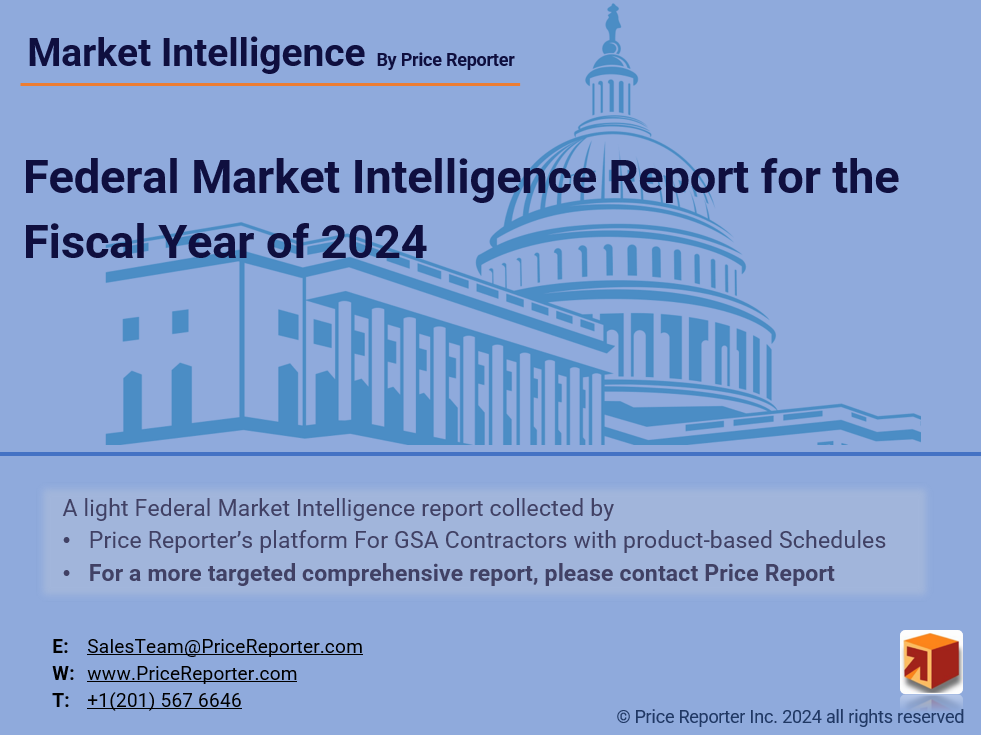The Federal Acquisition Circular (FAC) serves as an essential mechanism for implementing updates to the Federal Acquisition Regulation (FAR), which governs the procurement processes of federal agencies. These circulars ensure that the regulatory framework remains current, incorporating changes that reflect new legislation, policy shifts, technological advancements, and evolving government needs.
Purpose of FAC
The principal purpose of the FAC is to communicate updates that affect federal acquisition procedures. It plays a crucial role in promoting transparency and consistency across federal procurement activities.
Each FAC contains revisions, deletions, or additions to the FAR, which facilitates compliance for all federal agencies involved in procurement. These updates help agencies adapt to legal mandates and administrative policies effectively.
Furthermore, the FAC aims to enhance the efficiency of federal procurement processes, ensuring that all stakeholders understand their roles and responsibilities.
By consistently updating the FAR through the FAC, the government is able to support evolving acquisition strategies that align with its operational goals.
Importance in GSA Contracts
The implications of FAC updates are particularly significant for General Services Administration (GSA) contracts. As a federal agency, GSA is required to comply with the guidelines established in the FAR, making it essential for contractors to stay informed about changes communicated through the FAC.
GSA contracts must adapt to these updates to ensure compliance and maintain operational agility, particularly in areas such as contracting procedures and pricing policies.
Understanding the effects of the FAC on GSA contracts is vital for contractors, as non-compliance can lead to penalties, loss of contracts, and reputational damage.
Moreover, GSA contractors must remain vigilant regarding FAC changes to align their procurement strategies effectively and mitigate risks associated with outdated practices.
How FAC is Issued
The issuance of the FAC is managed by the Office of Federal Procurement Policy (OFPP) and is published in the Federal Register. This process allows for transparency and accessibility of information pertaining to federal procurement changes.
Typically, the FAC undergoes a systematic review process that includes public input and examination by various government stakeholders. This review is critical to ensuring that the proposed changes are practical and beneficial to all parties involved in federal contracting.
Following the public consultation, the OFPP may make necessary adjustments before finalizing the FAC content, which ensures that a diverse range of perspectives is considered.
Ultimately, the issuance of the FAC serves as a bridge between government policy and the operational realities faced by contractors across federal acquisition sectors.
Structure of FAC
The structure of a FAC generally includes a few key components that are integral to understanding the updates being presented:
- Revision Summary: A brief overview of the updates contained in the circular.
- Detailed Changes: Specific sections of the FAR that have been amended.
- Effective Dates: Dates on which the newly implemented changes become effective.
- Accompanying Guidance: Additional considerations or interpretations that may affect implementation.
This structured approach enables stakeholders to quickly ascertain the scope of changes and determine how it may impact their operations.
By providing clear guidance and an organized layout, the FAC contributes to better comprehension and navigation of complex regulatory requirements.
Furthermore, the structure of the FAC is designed to facilitate rapid dissemination of important information to the needed parties, ensuring timely adjustments to GSA contracts and compliance standards.
Examples of Updates
Updates included in a FAC can encompass a variety of topics crucial for federal contracting:
- Pricing policies: Revising how pricing is structured in contracts.
- Contracting procedures: Adapting procedures to streamline and modernize processes.
- Socioeconomic program changes: Reflecting new initiatives and policies aimed at promoting socioeconomic equity.
- Definitions of key terms: Providing clarifications that affect interpretation and application of the FAR.
- Clarifications on compliance requirements: Ensuring stakeholders understand what is necessary for compliance.
These examples demonstrate the dynamic nature of federal contracting regulations and the need for contractors to remain alert to changes.
Moreover, such updates may influence various aspects of contract performance, including execution timelines, eligibility for socioeconomic programs, and compliance with legal standards.
Staying informed about these updates is essential to aligning organizational strategies with regulatory requirements and maintaining competitiveness in the federal marketplace.
Recent Trends
Recent FACs have increasingly addressed changes in technology, sustainability practices, and the incorporation of digital tools into federal procurement processes. This reflects a broader commitment to modernization and efficiency in government contracting.
As technological advancements reshape the landscape of procurement, facilitating better communication and streamlined processes, the FAC plays a pivotal role in ensuring these innovations are effectively integrated.
Additionally, sustainability practices outlined in recent FACs aim to promote environmentally responsible procurement methods, highlighting the government’s commitment to long-term ecological stability.
Contractors should be prepared to adapt to these trends, utilizing the guidance provided by FAC updates to implement best practices in their operations, ensuring compliance and enhancing overall contractual effectiveness.
Key Takeaways for GSA Contractors
Knowledge of the implications of FAC updates is crucial for GSA contractors. They should take the following proactive measures:
- Regularly review new FACs for compliance: Ensuring understanding and adherence to all updates.
- Participate in training sessions: Engaging in ongoing education related to FAR changes and their implications.
- Adapt procurement strategies: Modifying strategies to align with updated regulations to maintain compliance.
- Collaborate with stakeholders: Sharing insights and strategies with industry peers for better alignment with best practices.
By following these steps, GSA contractors can minimize risks and enhance their capacity to adapt to the evolving regulatory landscape.
Moreover, staying informed results in improved operational practices and helps foster successful relationships with federal agencies, thereby contributing to successful contract execution.
Ultimately, maintaining a proactive approach to FAC updates will serve to solidify contractors’ standing in federal procurement and position them for long-term success.
Accessing FAC Information
FAC documents can be accessed online via the official Federal Register or the FAR website. These platforms provide the latest updates and detailed information regarding FAC changes.
Subscription options may also be available for those who wish to receive notifications about new releases, ensuring stakeholders remain informed without having to actively search for updates.
Utilizing these resources helps contractors stay ahead of changes and prepare for any potential implications on their contracts and operations.
In addition, GSA contractors should consider engaging with industry groups that may provide insights or curated information about FAC updates, further broadening their understanding of recent developments.
Impact on Contract Management
The updates presented in FAC have direct implications on contract management practices within the GSA framework. Changes may necessitate revisions to current contracts, impacting:
- Performance requirements: Altering expectations for deliverables and outcomes.
- Reporting obligations: Changing the nature and frequency of compliance reporting.
- Compliance checks: Modifying how compliance is monitored and enforced.
As a result, GSA contractors must be prepared to reassess their contracts and adjust management practices accordingly, ensuring that they meet emerging compliance criteria.
Failure to adapt to these changes could jeopardize contract performance, leading to penalties or loss of business opportunities.
Proactive engagement with the regulations will not only safeguard contractors but also enhance their ability to respond effectively to federal procurement requirements.
Compliance Requirements
GSA contractors must stay abreast of compliance requirements outlined in the FAC. Non-compliance can have serious consequences, including penalties, loss of contract, or other legal ramifications that could significantly impact business operations.
Understanding the nuances of these compliance requirements allows contractors to effectively navigate the complexities of federal procurement and mitigate risks associated with non-adherence.
Therefore, ongoing education and training regarding compliance are essential, and contractors should make a concerted effort to seek resources that provide clarity on updated requirements.
Additionally, fostering a culture of compliance within contracting teams can aid in minimizing oversights and ensuring that contracts reflect the latest FAC mandates.
Training and Resources
The GSA provides various resources, including training sessions and workshops, to assist contractors in understanding and implementing the changes brought forth by FAC updates. These educational opportunities serve as invaluable tools to navigate the regulatory landscape.
Contractors should take full advantage of available training sessions to ensure their teams are knowledgeable about the most recent updates and best practices for compliance.
Moreover, GSA offers online resources, guides, and toolkits that can help contractors stay informed about updates, allowing them to reference materials as needed.
Engagement with these resources not only aids compliance but also empowers contractors to optimize their operational strategies and enhance their overall effectiveness in federal contracting.
Role of Stakeholders
Various stakeholders, including GSA officials, contractors, and procurement professionals, play a vital role in the FAC review process. Their feedback is essential for ensuring that regulations align with the operational realities faced by the contracting community.
Stakeholder engagement during the review process helps create a more comprehensive and effective FAR that addresses the needs of diverse contracting environments.
This collaborative approach also fosters a sense of shared responsibility among stakeholders, promoting open dialogue and constructive feedback about regulatory changes.
Ultimately, the involvement of stakeholders in the FAC process enhances the overall efficacy of federal procurement and contributes to continuous improvement in contracting practices.
Stakeholder Consultation
Prior to implementing changes, public consultations are held, allowing stakeholders to voice concerns and suggest improvements. This collaborative approach helps enhance the overall efficacy of the FAR.
Consultations can lead to more informed decision-making and ensure that the FAC accurately reflects the needs and realities of the contracting community.
Incorporating stakeholder feedback is not only a best practice but also a necessary step in creating regulations that are both practical and effective.
Such engagement fosters goodwill and a collaborative spirit among stakeholders, which is vital to a successful federal contracting environment.
Challenges
Adapting to changes outlined in the FAC can present challenges, particularly for smaller contractors who may have limited resources and staff dedicated to compliance.
These contractors may struggle to keep up with the pace of changes and the complexity of regulations, making it essential to prioritize proper training and resource allocation.
Additionally, understanding and implementing the nuances of new requirements can be daunting, potentially leading to oversight and non-compliance.
To overcome these challenges, smaller contractors should seek assistance through mentorship, partnerships, or industry networks, allowing them to share knowledge and resources effectively.
Future Directions
Looking ahead, FAC updates are poised to continue evolving in response to global events, technological advancements, and policy changes. Stakeholders must remain agile and responsive to these developments to remain compliant and competitive.
Future trends may include greater emphasis on digital procurement solutions, increased focus on sustainability, and continuous adjustments to compliance standards as technology advances.
By staying attuned to potential future shifts, contractors can proactively adjust their strategies, ensuring they remain relevant in a changing procurement landscape.
Adopting flexible operational practices will further equip contractors to navigate these changes successfully and maintain strong performance in federal contracting.
Conclusion
In summary, the Federal Acquisition Circular is a crucial document in the GSA contracting arena, serving to keep federal procurement processes aligned with contemporary practices and legislative mandates. The importance of staying informed about FAC contents cannot be overstated, as it directly impacts contract execution and compliance obligations.
Contractors must prioritize regular review of FAC updates, engage in training and education to understand changes, and actively adapt procurement strategies to meet new requirements.
Ultimately, success in federal contracting depends on contractors’ ability to stay informed, responsive, and proactive in their approach to the evolving landscape of federal acquisition regulations.
Summary Checklist
To keep abreast of FAC updates, follow this checklist:
- Check the Federal Register regularly for new FAC publications.
- Review training materials provided by the GSA regarding the latest changes.
- Stay connected with industry groups to share information about FAC developments.
- Ensure all contracts are compliant with the most recent FAR amendments.
Final Thoughts
Being knowledgeable about the nuances of FAC and its influence on GSA contracts is essential for successful federal contracting. As procurement landscapes evolve, maintaining a proactive approach will benefit contractors, agencies, and the federal procurement community at large.



